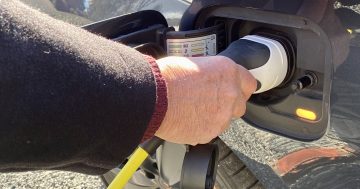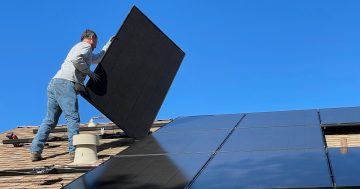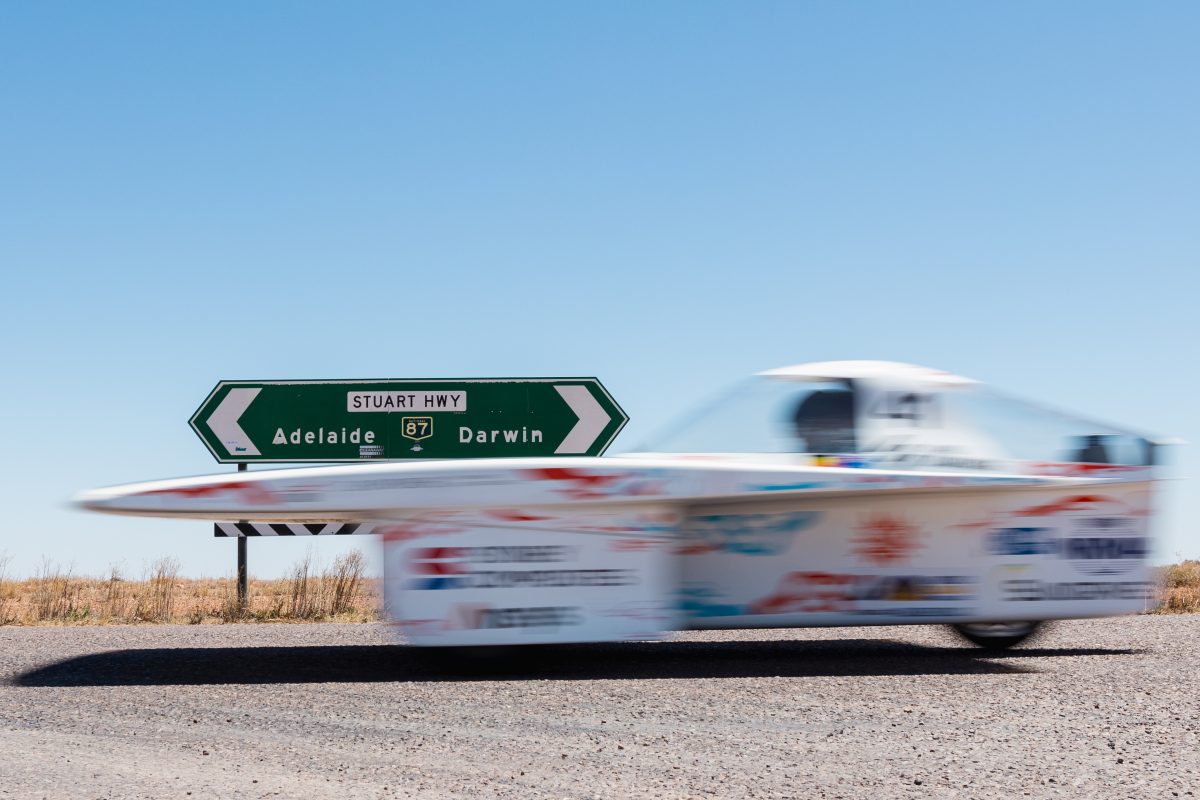
3000 km from Darwin to Adelaide is a long way to go on nothing but the sun (and a lot of engineering, mind you). Photo: ANU.
Wagga Wagga, Griffith, Bathurst, Orange and Dubbo. They’re all far from the city. And despite the NSW Government’s efforts to carpet-bomb the state with new public charging stations, electric vehicles aren’t exactly commonplace there yet.
The Australian National University (ANU) wants to change that.
Since 2015, the Canberra-based uni has entered a team into the annual Bridgestone World Solar Challenge (BWSC), where cars powered by nothing but the sun – via a bank of solar panels on the roof – race 3000 km from Darwin to Adelaide over five days.
It forms a sort of practical research project for students who must tackle obstacles that ultimately carry lessons for the EVs we might drive.
And between 15 and 22 February next year, the rubber will hit the road. Origin Energy has come onboard to fund the team’s first Regional NSW Community Showcase tour, also supplying a fleet of EVs to take them there.
The purpose is two-fold.
ANU Solar Racing business lead Cameron Wallace says the team will meet with year 10 to 12 students across five towns in regional NSW, showing off the solar-powered race car to “encourage children and young people towards a future in STEM”.
“In each place, we’ve tailored sessions towards the different schools, and the students will rotate through a series of activities the team has put together to give these students a taste of some of the challenges we face on the team,” he says.
“So in Bathurst, we’ll invite students to the track at Mount Panorama to hear a technical demonstration and then see the car doing a lap.”
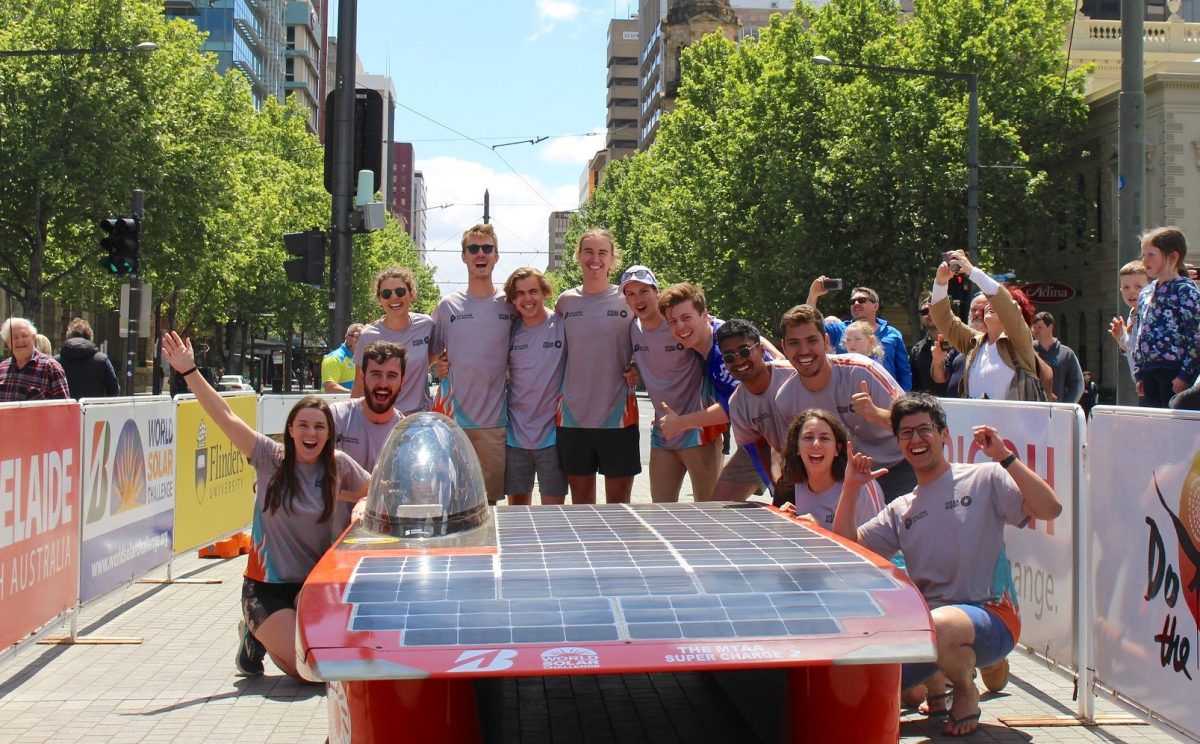
The ANU’s solar racing team celebrates at the finish line of the last Bridgestone World Solar Challenge in 2023. Photo: ANU.
The second objective is to show “we can go into what many would consider pretty remote towns in our EVs and – touch wood – complete the whole trip without issue”.
“Range anxiety is getting a lot better now,” Cameron says.
The ANU team is onto the fourth car it’s developed for the World Solar Challenge, and there’s at least one major engineering hurdle members have to jump over ahead of the next race in August 2025.
“Regulations have reduced the battery size by almost three times what it was in the last race, so what that means for our team is that we now have some students working on research projects related to new battery controllers and monitoring systems,” Cameron says.
A lot of the time, the solar racing teams are trialling technology from brands that ultimately have EVs as the target market.
“We get new in-development products, we test them and refine them, and then they’re able to show that ‘hey, this works in a real-life application’, before it goes commercial. Everything from our solar cells to our battery cells and electronic components really flow right into the market.”
Does this mean we’ll see solar panels on the roofs of our EVs in future? It’s not unheard of.
In 2016, the Toyota Prius was offered to Japanese and European markets with a solar roof option said to boast the car’s electric-only range by at least 10 per cent by powering the lights, windows and air-conditioning.
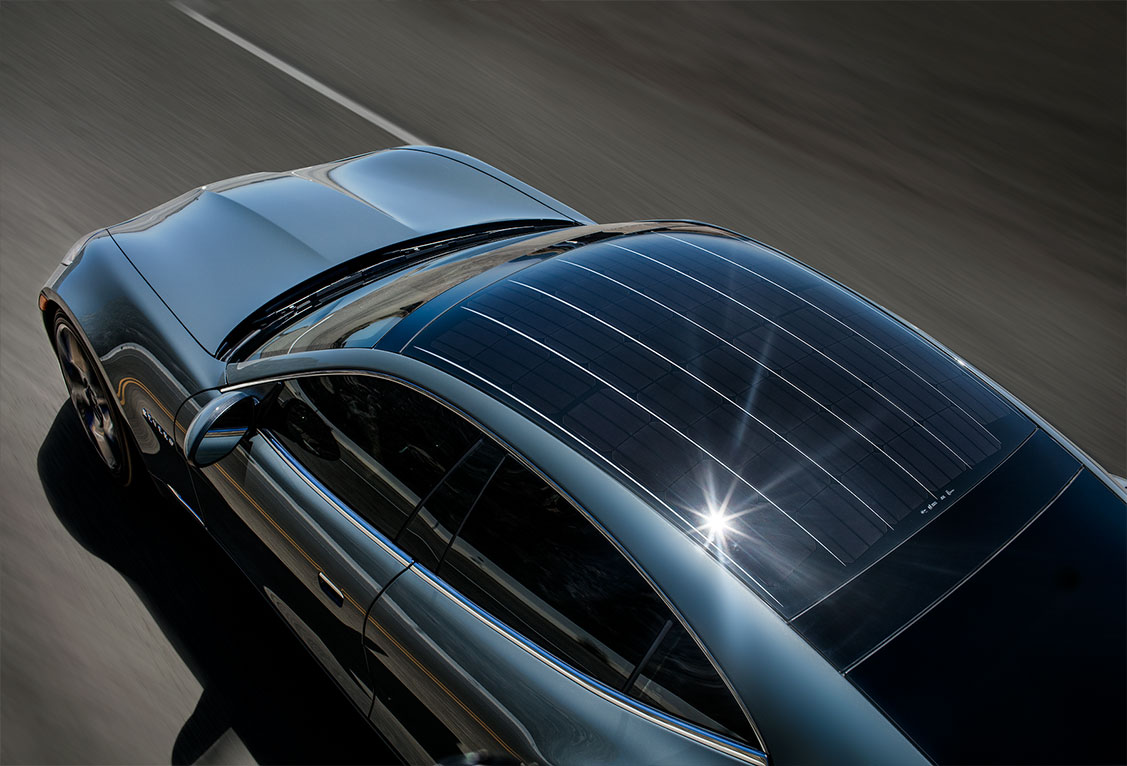
The solar roof on the Fisker Revero, developed by A2 Solar. Photo: A2 Solar.
Around the same time, American EV brand Fisker fitted the “most powerful solar car roof module of its kind” to its four-door Karma sports sedan. In 2021, it claimed solar panels mounted to the roof of its Ocean SUV could add “up to” 2000 km of range every year in sunny regions (or about 5 km a day).
While it was never offered here, the Hyundai IONIQ 5 also had a solar roof designed primarily to keep its smaller 12V battery topped up.
And most recently in December, Mercedes-Benz announced it was developing “solar paint” that could provide enough energy for up to 12,000 km of range a year, with full-scale production between five and 10 years away.
So it’s not quite the same as a solar race car that manages to go 350 to 400 km a day equipped with nothing but solar panels and a small battery. But Cameron says as solar technology continues to improve, more car makers may start using the technology.
“Not necessarily as the main source of power, but certainly as an auxiliary support,” he says.
“But also, if you have a solar array system at home that’s charging your EV’s battery, that’s essentially a solar-powered vehicle.”












